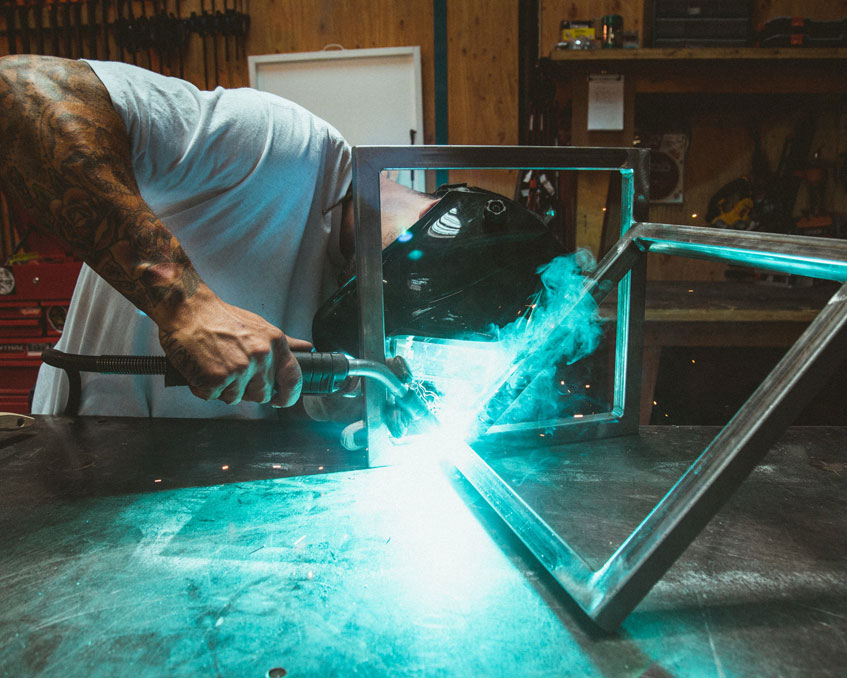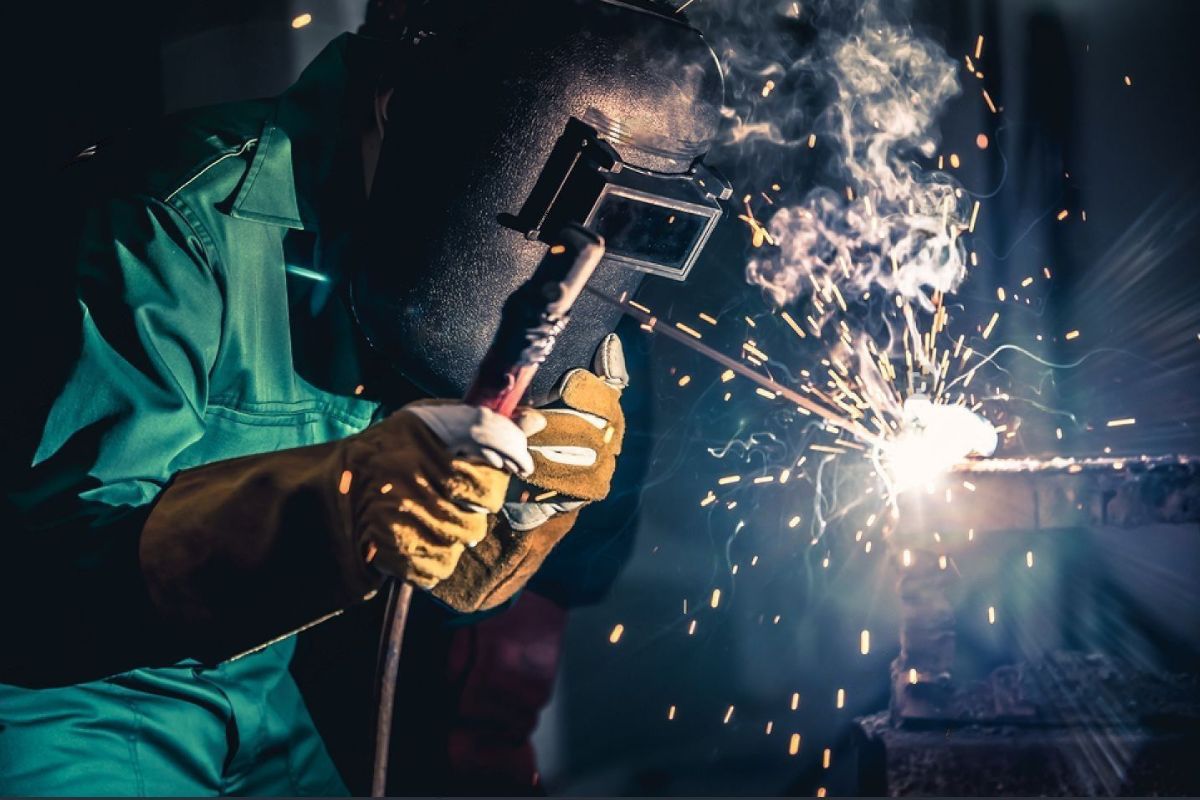Typical Welding Repair Work Issues and How to Address Them Properly
Welding repairs often run into a variety of problems that can endanger the honesty of the last product. Common troubles include inadequate infiltration, porosity, and misalignment, among others. Each issue presents special obstacles that call for details approaches for resolution. Comprehending these problems is vital for welders intending to boost their end results and abilities. This discussion will certainly check out these common welding fixing problems and effective techniques to address them.
Inadequate Penetration
Insufficient penetration happens when the weld metal fails to totally fuse with the base material, causing weak joints and prospective architectural failures. This concern frequently stems from insufficient heat input, inaccurate electrode angle, or incorrect welding speed. Welders may encounter poor infiltration as a result of a miscalculation of the necessary criteria for a details product thickness or kind. In addition, contamination on the base product's surface area can prevent efficient bonding, worsening the issue. To resolve poor penetration, welders must assure proper settings on their devices and keep a clean job surface area. Normal assessment of welds is suggested to recognize any type of shortages early, permitting prompt improvements and the prevention of endangered structural integrity in bonded settings up.
Porosity
Porosity is a common defect in welded joints that manifests as tiny gas bubbles entraped within the weld metal. This defect can endanger the stability of the weld, leading to reduced stamina and possible failing under stress. Fabrication. Porosity commonly arises from contamination, dampness, or incorrect welding techniques, which enable gases to escape right into the liquified weld swimming pool. To address porosity, welders ought to guarantee correct surface area prep work, keep a clean working atmosphere, and make use of suitable welding criteria. Furthermore, selecting the appropriate filler material and protecting gas can mitigate gas entrapment. Routine assessment and testing of welds can help determine porosity early, assuring timely restorative actions are taken, therefore maintaining the high quality and integrity of the welded structure
Imbalance
Misalignment in welding can emerge from various aspects, including incorrect setup and thermal expansion. Recognizing the origin triggers is essential for effective resolution. A number of adjustment methods are available to straighten parts and assure structural honesty.
Sources of Misalignment
Welding imbalance typically comes from a selection of underlying problems that can endanger architectural stability. One key cause is inappropriate fit-up of elements before welding, which can cause spaces and uneven surfaces. Variants in thermal development throughout the welding process can additionally cause distortion, particularly if the products being joined have different coefficients of expansion. In addition, insufficient fixturing and securing might stop working to hold elements firmly in location, resulting in activity throughout welding. Poorly conserved devices, consisting of welding equipments and devices, may introduce inconsistencies in the weld grain, more adding to misalignment. Finally, operator mistake, stemming from insufficient training or experience, can likewise play a substantial function in developing misaligned welds.
Improvement Methods Offered
Dealing with misalignment properly calls for a mix of corrective techniques tailored to the particular concerns available. One common technique is making use of jigs or components to hold elements in the correct position during welding, ensuring regular alignment. In addition, preheating the products can aid lower distortion and enhance fit-up. For substantial misalignment, mechanical realignment methods, such as using hydraulic jacks or clamps, can be employed to fix the position prior to welding. Post-weld warm treatment may likewise be necessary to relieve stresses brought on by imbalance. Cautious examination and change throughout the configuration phase can avoid misalignment problems from coming to be substantial troubles, advertising a smoother welding procedure and enhancing general architectural stability.
Distortion
Distortion is a common obstacle in welding that can arise from different factors, including irregular home heating and cooling. Understanding the root causes of distortion is necessary for carrying out efficient prevention methods. Resolving this problem not just improves structural honesty but also improves the total quality of the weld.
Sources of Distortion
When subjected to the intense warm of welding, products often go through modifications that can cause distortion. This phenomenon mostly arises from thermal growth and tightening throughout the welding procedure. As the weld location warms up, the material expands; upon air conditioning, it gets, which can produce interior stress and anxieties. In addition, uneven heating across a work surface can aggravate these anxieties, causing warping or flexing. The type of material additionally plays a considerable role; steels with varying thermal conductivity and coefficients of expansion might respond in a different way, resulting in unforeseeable distortions. Additionally, poor joint style and poor fixturing can add to misalignment throughout welding, raising the chance of distortion. Understanding these causes is important for efficient welding repair work and avoidance strategies.
Avoidance Techniques
Reliable avoidance methods for distortion during welding concentrate on managing warmth input and guaranteeing appropriate joint design. Keeping a consistent warmth input aids to lessen thermal growth and contraction, which can cause distortion. Making use of techniques such as preheating the workpiece can likewise decrease the temperature gradient, advertising uniform heating. Furthermore, choosing suitable joint layouts, such as T-joints or lap joints, can boost stability and lower stress and anxiety concentrations. Executing appropriate fixturing to protect the workpieces in position further help in keeping alignment throughout the welding procedure. Lastly, staggered welding sequences can distribute warm extra equally, avoiding localized distortion. By using these methods, welders can greatly reduce the chance of distortion and boost the total top quality of their welds.
Breaking
Fracturing is an usual stitch weld problem come across in welding repair services, commonly arising from various aspects such as incorrect cooling prices, material selection, or inadequate joint preparation. The event of cracks can greatly endanger mig welder for sale the integrity of the weld, leading to potential failings throughout operation. To address this concern, welders need to first analyze the origin causes, making sure that materials work and appropriately picked for the certain application. Additionally, controlling the air conditioning rate throughout the welding procedure is essential; rapid cooling can induce stress and cause splitting. Proper joint style and preparation also add to minimizing the risk. Applying these approaches can improve weld high quality and sturdiness, ultimately minimizing the likelihood of fracturing in completed weldments.

Incomplete Fusion
A considerable issue in welding repair services is insufficient combination, which takes place when the weld steel does not properly bond with the base product or previous weld passes - Belgrade Welding. This issue can result in weaknesses in the joint, possibly compromising the integrity of the bonded structure. Variables adding to incomplete fusion include inadequate warmth input, incorrect welding method, and contamination of the surfaces being joined. To resolve this concern effectively, welders should ensure appropriate pre-weld cleansing and surface preparation, as well as adjust their welding parameters to attain appropriate penetration and blend. Regular inspection during the welding process can also assist recognize insufficient fusion early, allowing for timely corrective steps to improve the total top quality of the weld
Overheating
While welding fixings can enhance structural integrity, overheating provides a significant difficulty that can lead to product deterioration. Too much warm during welding can change the mechanical residential or commercial properties of metals, resulting in minimized toughness, raised brittleness, and warping. This sensation is specifically crucial in high-stress applications where structural integrity is paramount. Determining getting too hot can include aesthetic examinations for discoloration this website or distortion, as well as monitoring temperature throughout the welding procedure. To alleviate the threats linked with getting too hot, welders should use appropriate methods, such as managing warmth input, readjusting travel speed, and using ideal filler products. Furthermore, executing pre- and post-weld warmth therapies can assist recover material properties and improve the total top quality of the repair, guaranteeing long-term performance and safety and security.
Regularly Asked Concerns
What Are the Usual Indicators of a Welding Issue?

Just How Can I Test My Welds for Quality?
To evaluate welds for top quality, one can utilize visual examinations, ultrasonic screening, and radiographic techniques. Each method guarantees structural honesty, determines issues, and verifies adherence to specified standards, inevitably boosting the integrity of the welded joints.
What Security Safety Measures Should I Take While Welding?
When welding, one ought to focus on security by wearing proper personal protective tools, guaranteeing proper air flow, securing flammable products away, maintaining a tidy work space, and being conscious of surroundings to avoid mishaps and injuries.
Can I Repair a Weld Without Remodeling the Entire Joint?
Repairing a weld without redoing the whole joint is feasible, depending on the damages (Montana Mobile Welding and Repair Fabrication). Techniques such as grinding, including filler product, or utilizing a welding procedure can successfully resolve certain problems while maintaining the surrounding framework
What Devices Are Important for Efficient Welding Repairs?
Necessary devices for effective welding repairs consist of a welding equipment, wire brush, grinder, safety gear, clamps, and filler products. Each tool plays a vital duty in ensuring top quality and safety and security during the repair service procedure. Porosity typically emerges from contamination, dampness, or improper welding methods, which allow gases to get away right into the molten weld pool. Badly conserved equipment, including welding machines and tools, may introduce variances in the weld bead, further adding to imbalance. When subjected to the extreme warm of welding, materials often undertake changes that can lead to distortion. Cracking is a typical problem come across in welding repair work, often resulting from different variables such as inappropriate air conditioning prices, product selection, or insufficient joint prep work. A significant problem in welding fixings is insufficient blend, which occurs when the weld metal does not properly bond with the base product or previous weld passes.
Comments on “A quick guide about overheating prevention from Montana Mobile Welding and Repair”